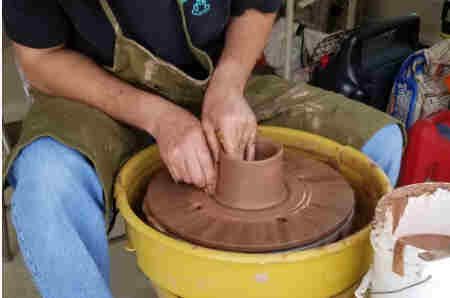Pottery making is one of our oldest human inventions. The earliest artifacts related to man made clay and pottery pieces date back to the Neolithic period some 30,000 years ago. Early man originally used native clay found in river banks to fashion permanent pieces of art and utility for everyday use. It was the beginning of the manufacturing age, and has come such a long way since then.






